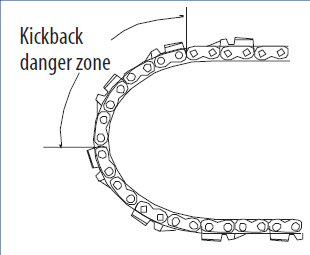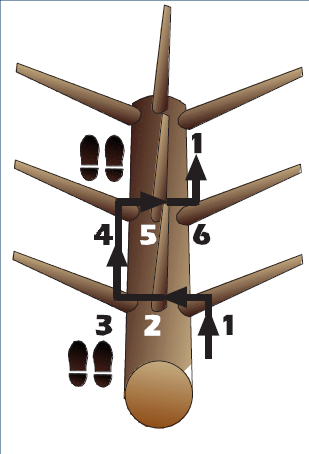

| Topic: Limbing, Bucking and Kickbacks | |
| Date Issued: September 19, 2014 | Date Revised: |


The six-step method illustrated above is a safe, easy and efficient way to limb trees.
Most kickback incidents occur during limbing and bucking, as they are the operations in which the guidebar tip of the saw is more likely to come in contact with logs and branches.